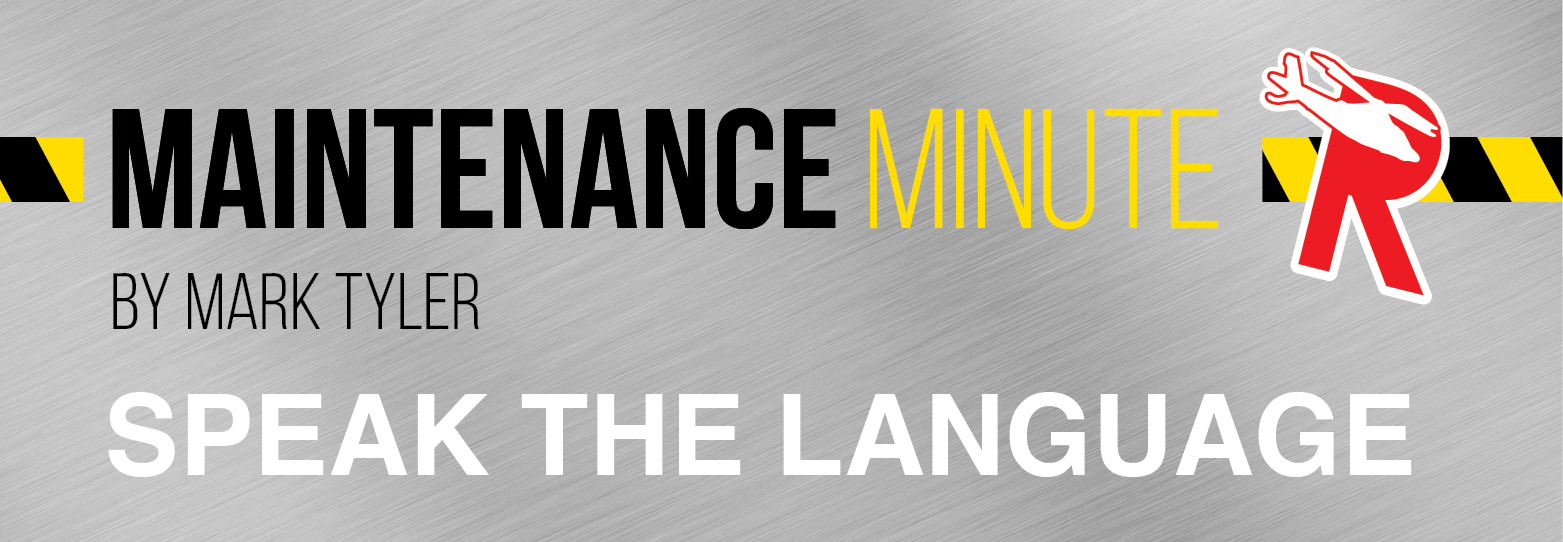|
May
05
2025
|
|
Posted 219 days ago ago by Admin
|
|

I love a good catchphrase. Much like the marketing ads that tell us to “Just Do It” or “Have It Your Way,” in the helicopter world, Bell Helicopter brought us some classics in the 1990s, including “Ask Any Pilot” and my personal favorite, “It Better Be Bell.”
Helicopter maintenance—like most professions—has developed its own set of phrases, jargon, acronyms, and abbreviations. Nowhere is this more evident than in avionics. Whenever I have a conversation with our lead avionics technician, I have to constantly remind him, “I don’t speak that language.” Avionics is practically its own dialect, with acronyms nested inside of other acronyms.
The use of slang, jargon, acronyms, and abbreviations in aviation maintenance—and in technical fields overall—evolved out of necessity, culture, and the need for efficiency. With that efficiency comes risk: the very real danger of miscommunication.
Let’s say I’ve got a young mechanic, and the lead mechanic gives him these instructions:
"Hey Jim, N123X is AOG and the last thing we need is another hangar queen. The tail rotor is TBO, and I need you to R&R it. Look up the P/N and get one coming from the OEM. Make sure there aren’t any ADs against it or any other ICAs coming due. When it’s all completed, check and verify that no FOD is left on site and that the work is written up and signed off. No pencil-whipping here. Also, this is an RII item, so don’t forget to notify QA. Oh, and one more thing — install the gear we’ll need to shoot the tail and verify balance."
That’s a lot of information packed into a handful of sentences. Even an experienced mechanic might need to stop and untangle all those acronyms and instructions. For a newer mechanic, there’s a serious opportunity for failure.
I’ve learned that this challenge doesn’t just apply to maintenance. I ran into the same issue when I needed to get approval to purchase some new equipment — approval that required sign-off from the CFO. After I voiced my frustration with the process, my accountant wife gave me some blunt advice: “You need to speak the CFO’s language.”
That hit home. Accounting doesn’t speak mechanic. Mechanics don’t speak accounting. So, I carefully crafted an email that answered every question I knew the CFO would have — why we needed the equipment, the cost, what was wrong with the existing equipment, the expected ROI, and so on. Within minutes, I got a one-word reply: Approved.
The hangar, flight line, and run-up area are dangerous environments. They’re not places where you can afford misunderstandings. Clear, unambiguous communication between mechanics, pilots, and leadership isn’t just helpful — it’s essential for safety. Our goal is for everyone to go home safe at the end of the day.
So yes, speak the language — but always remember who’s listening.
Maybe I’ll create my own personal favorite catchphrase:
“Intentions Better Be Clear, Understandable, and Accountable.”
READ MORE ROTOR PRO: https://justhelicopters.com/Magazine
WATCH ROTOR PRO YOUTUBE CHANNEL: https://buff.ly/3Md0T3y
You can also find us on
Instagram - https://www.instagram.com/rotorpro1
Facebook - https://www.facebook.com/rotorpro1
Twitter - https://twitter.com/justhelicopters
LinkedIn - https://www.linkedin.com/company/rotorpro1